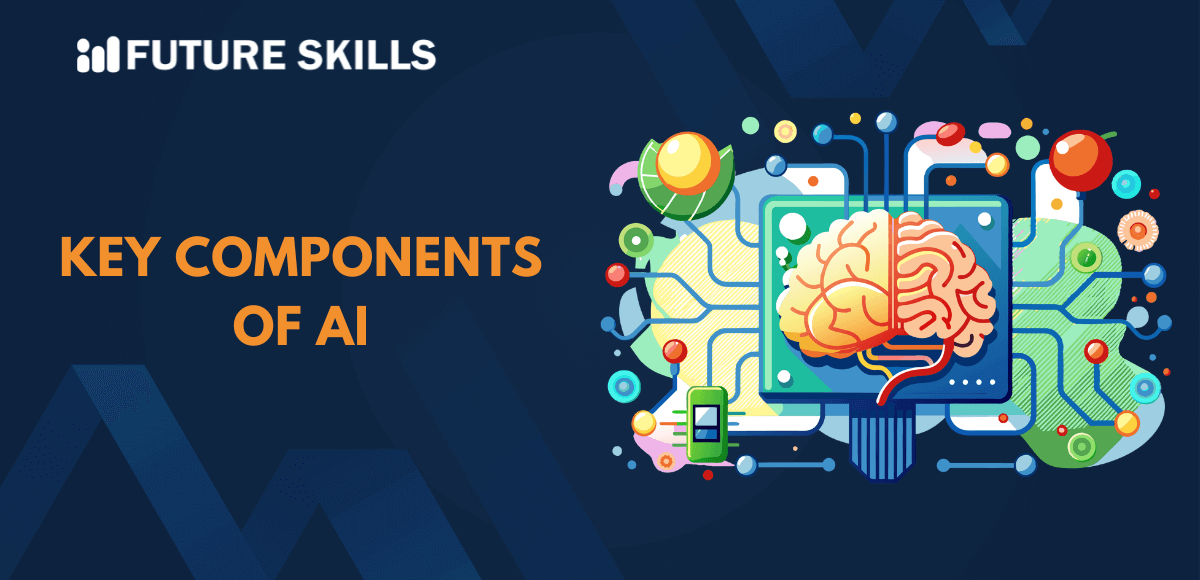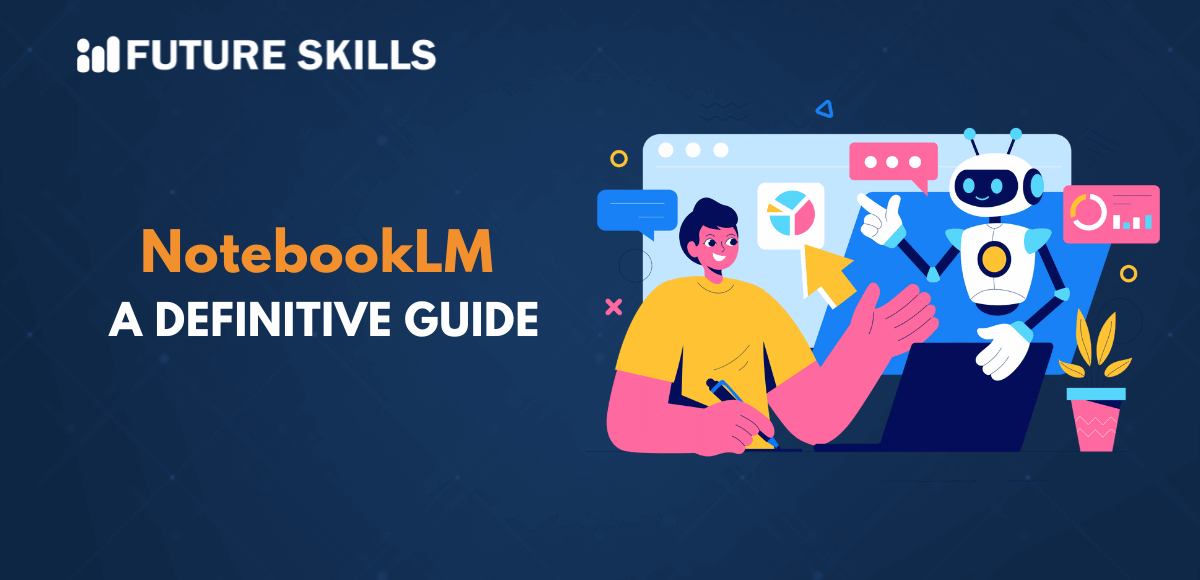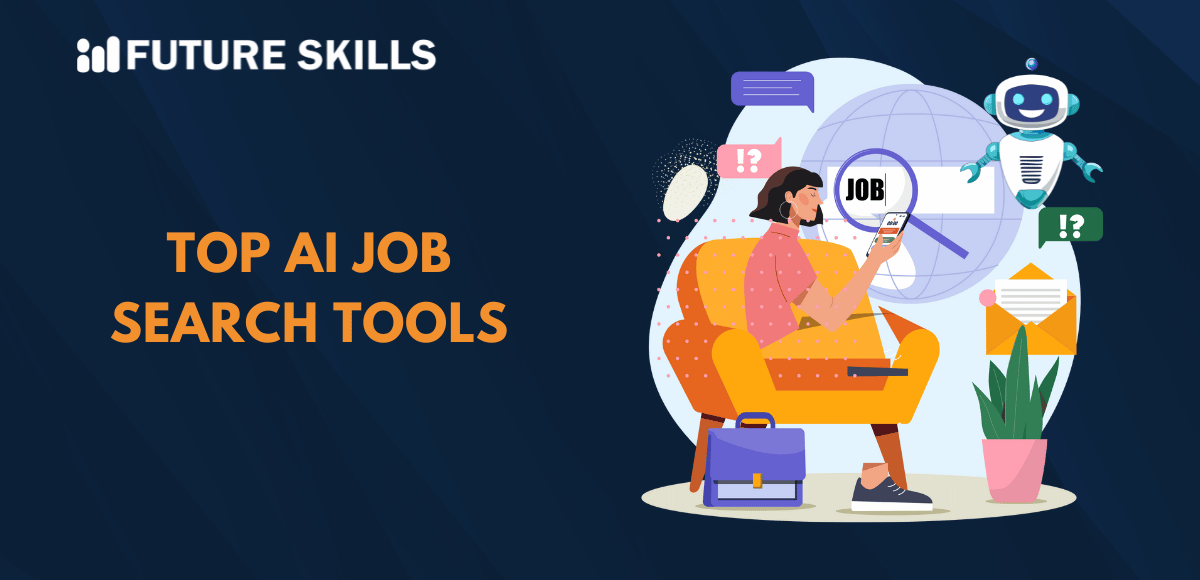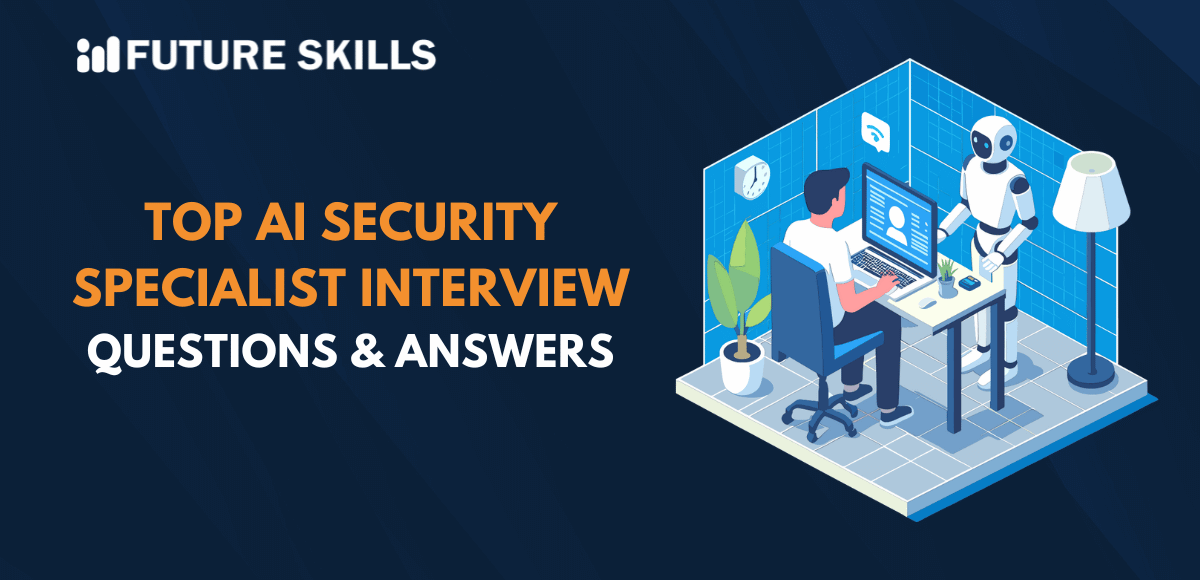Artificial intelligence serves as an integral part of the everyday lives of people worldwide and business operations. You can find applications of AI in different examples such as smart voice assistants and self-driving cars. The amazing benefits of AI have been driving curiosity about artificial intelligence components and their purpose. Most people understand AI on a superficial level without an understanding of its working mechanism.
Artificial intelligence is a discipline of computer science that helps in developing computer systems that can simulate human intelligence. AI can help in performing different complex tasks such as recognizing patterns to solve problems and understand natural language. Machines can utilize AI for developing reasoning capabilities to transform into intelligent systems. Let us learn more about the components that drive the impressive wonders in the AI landscape.
Learn the core concepts and advanced techniques of AI and become an AI expert with our Certified AI Professional (CAIP)™ Course.
Understanding the Working of Artificial Intelligence
The best way to begin learning about AI components is through an overview of the working of AI. You can use insights on the working of artificial intelligence systems to unravel the significance of the components of AI and their uses. AI technologies work by combining large volumes of data with advanced algorithms to recognize important patterns and learn them. Different algorithms enable AI models to adapt effectively to new inputs and learn independently.
The creation and training of AI models starts with the collection of data, which may include text, audio, video files or images. The AI model would process the data and analyze it for identifying relationships between different data points and the underlying patterns. Once the training is complete, AI models can use their learning to draw relevant predictions and perform various tasks without additional programming. AI systems can also learn and improve continuously as they work on different tasks and receive feedback.
Exploring the Reasons to Learn about AI Components
You must learn about AI components to understand the working mechanism of AI from a technical perspective. Artificial intelligence has caught the attention of the world for its transformative impact on businesses and different aspects of everyday lives of people. Businesses must explore answers to queries like ‘What are the components of an AI?’ to ensure that they can use AI effectively for enhancing efficiency and streamlining operations. AI technology can help in automation of many traditional tasks to achieve improvements in efficiency and productivity.
Artificial intelligence uses different components for processing large datasets to extract crucial insights on business operations. The rise of generative AI tools has been responsible for fuelling innovative developments in different industries such as marketing, product design and education. AI represents the next stage of evolution in the rise of intelligence in machines that might create a new generation of intelligent systems.
Discovering the Important Components of AI
AI is not one specific technology that empowers machines to think and work like humans. The capabilities of AI revolve around the components of the AI landscape. The main components of AI can help you understand the working of AI beyond the surface level. Some of the notable components of artificial intelligence include machine learning, natural language processing, computer vision, deep learning, robotics and expert systems.
Let us find more insights on these components with examples to understand their significance in the domain of artificial intelligence.
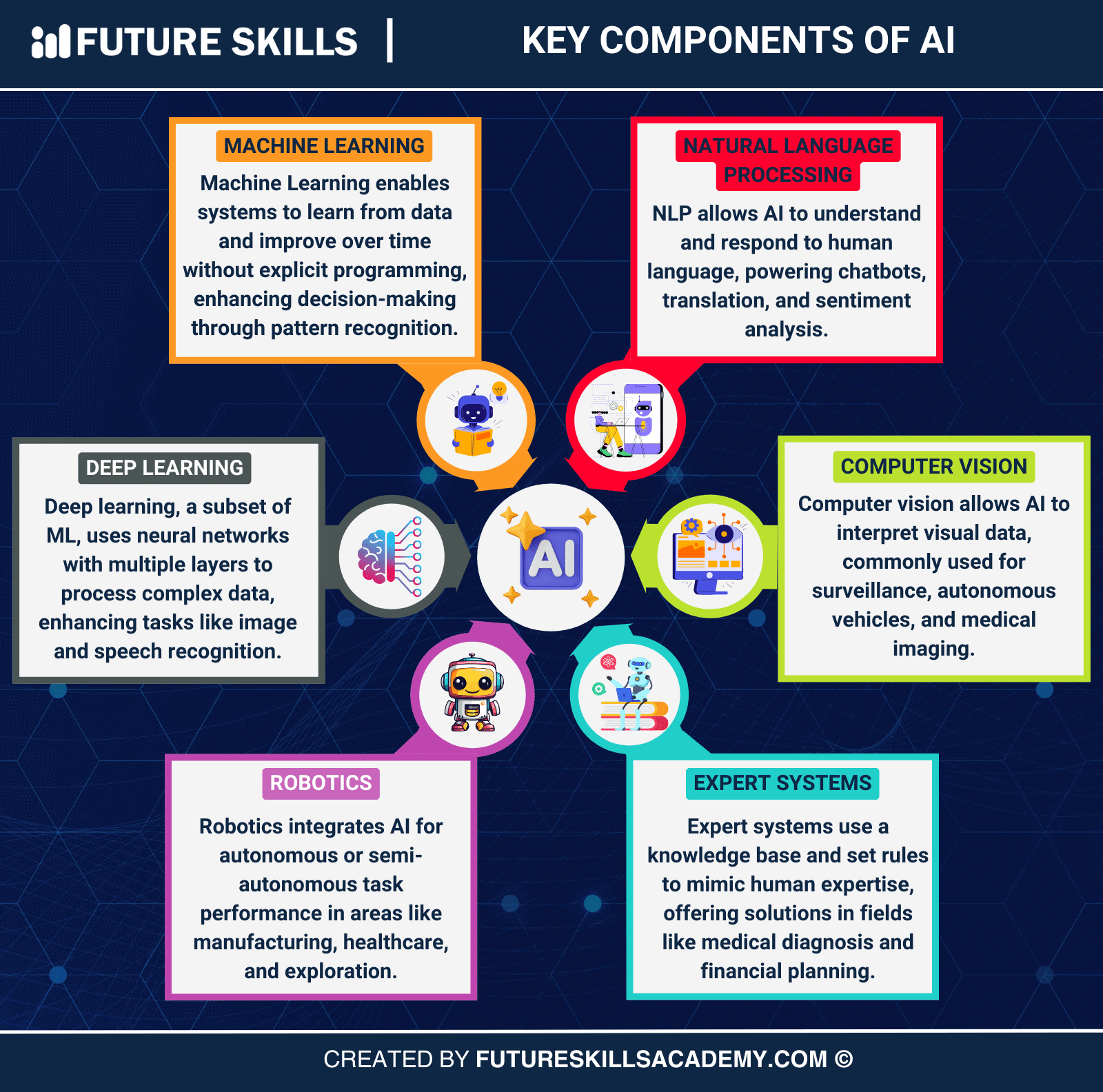
-
Machine Learning
Machine learning is the most crucial component of artificial intelligence. It helps AI systems in learning from different datasets without explicit programming. Machine learning relies on statistical techniques for continuous improvement with time. ML algorithms leverage complex computational methods for training and gaining valuable insights through experience.
The review of different components of AI with examples would help you identify the different types of ML algorithms. Supervised learning, unsupervised learning and reinforcement learning are the three common variants of ML algorithms with distinct functions. ML algorithms which use supervised learning rely on labeled data while unsupervised learning involves using unlabeled data. Machine learning algorithms that use reinforcement learning focus on recognizing optimal solutions for achieving the desired outcomes.
Machine learning stands out as one of the most prominent components of artificial intelligence with a broad range of applications. It is useful for image recognition, speech recognition, and predictive analytics. Users can also make the most of machine learning in combination with other components like natural language processing and computer vision. The notable examples of machine learning use cases include recommendation engines, autonomous cars and search algorithms.
-
Computer Vision
Computer vision is a promising component in the domain of artificial intelligence that has been strengthening the foundations for advanced AI applications. It focuses on effective analysis and understanding of videos and images to identify objects. Computer vision is one of the promising artificial intelligence components that works in different ways. Users can leverage different types of computer vision approaches such as image recognition, image segmentation and object detection.
The applications of computer vision such as autonomous cars, medical imaging and facial recognition have played a major role in expanding the scope for AI adoption. AI applications that use computer vision models can ensure accurate detection of specific objects and motion. The examples of computer vision in AI include the autopilot system of Tesla and automatic photo tagging on social media.
-
Deep Learning
Deep learning is also a vital component in the AI ecosystem that relies on neural networks for tapping into the potential of large unstructured datasets. The neural networks that power deep learning models are designed according to the structure of the human brain. Deep learning is one of the crucial components of AI created to scale up the capabilities of traditional machine learning. The significance of deep learning is evident in the fact that it reduces the need for human intervention.
The working of deep learning revolves primarily around extraction of abstract features from large datasets. You can use them for different types of tasks including classification and regression with the assurance of better performance. Common examples of deep learning applications include virtual assistants that use deep learning models for improving their natural language processing capabilities.
-
Natural Language Processing
One of the most common components of artificial intelligence that you may have come across is natural language processing. The chatbots you see on most websites showcase one of the important components of AI with examples in different sectors. Natural Language Processing empowers machines with capabilities for reading, deciphering, and understanding natural language to generate responses for user queries.
The applications of natural language processing have brought AI to the attention of the world, especially with AI chatbots like ChatGPT. Other uses of NLP include translation of text and audio into different languages and sentiment analysis. Virtual assistants such as Google Assistant and Siri serve as the best examples of NLP applications you can access on smartphones.
-
Expert Systems
Expert systems are another crucial component of the AI ecosystem that use knowledge bases on niche topics to serve as expert advisors. The primary goal of expert systems focuses on solving complex problems with the help of different technologies. The answers to queries like “What are the components of an AI?” emphasize the use of rule-based systems, neural networks, and fuzzy systems in expert systems. Expert systems can offer the assurance of better performance in financial and healthcare applications.
The applications of expert systems in financial services include stock prediction and risk diversification. Another promising application of expert systems in the financial sector is credit card fraud detection. In the healthcare sector, expert systems can help with effective diagnosis of diseases on the basis of symptoms. Stanford University has created an expert system for effective and easier diagnosis of bacterial infections.
-
Robotics
Robotics is an important branch of AI that deals with designing, developing, and operating robotic machinery. It is one of the main components of AI tailored for semi-autonomous and autonomous tasks in healthcare, data exploration and manufacturing sectors. The variants of robotics include service robots, industrial robots and medical robots.
You can notice that robotics have diverse applications as an important component of artificial intelligence. Robotics can help with search and rescue operations, warehouse management, surgical systems and space exploration. The robots in Amazon warehouses and Mars rovers by NASA are the most prominent examples of robotics. The Da Vinci surgical system also represents innovative advancements in applications of robotics that encourage mainstream adoption of AI.
Make the most of AI technology and learn how to write effective prompts to get the desired results with our Prompt Engineering Certification Course. Enroll now!
Final Thoughts
The introduction to artificial intelligence components proves that AI is not a standalone technology. It is a combination of the different components such as machine learning, deep learning, natural language processing, computer vision, robotics and expert systems. Each component serves a crucial role in strengthening the AI ecosystem. Machine learning empowers computer systems to mimic human intelligence and deep learning involves the use of neural networks to expand the capabilities of machine learning.
Natural language processing is one of the common examples of AI components that you can find in AI chatbots. Robotics has also been empowering discussions about the use of AI in everyday lives of people and different industries. Expert systems support the applications of artificial intelligence as expert advisors on niche topics such as finance and healthcare. Discover more insights on the components of artificial intelligence with the help of comprehensive learning resources now.

